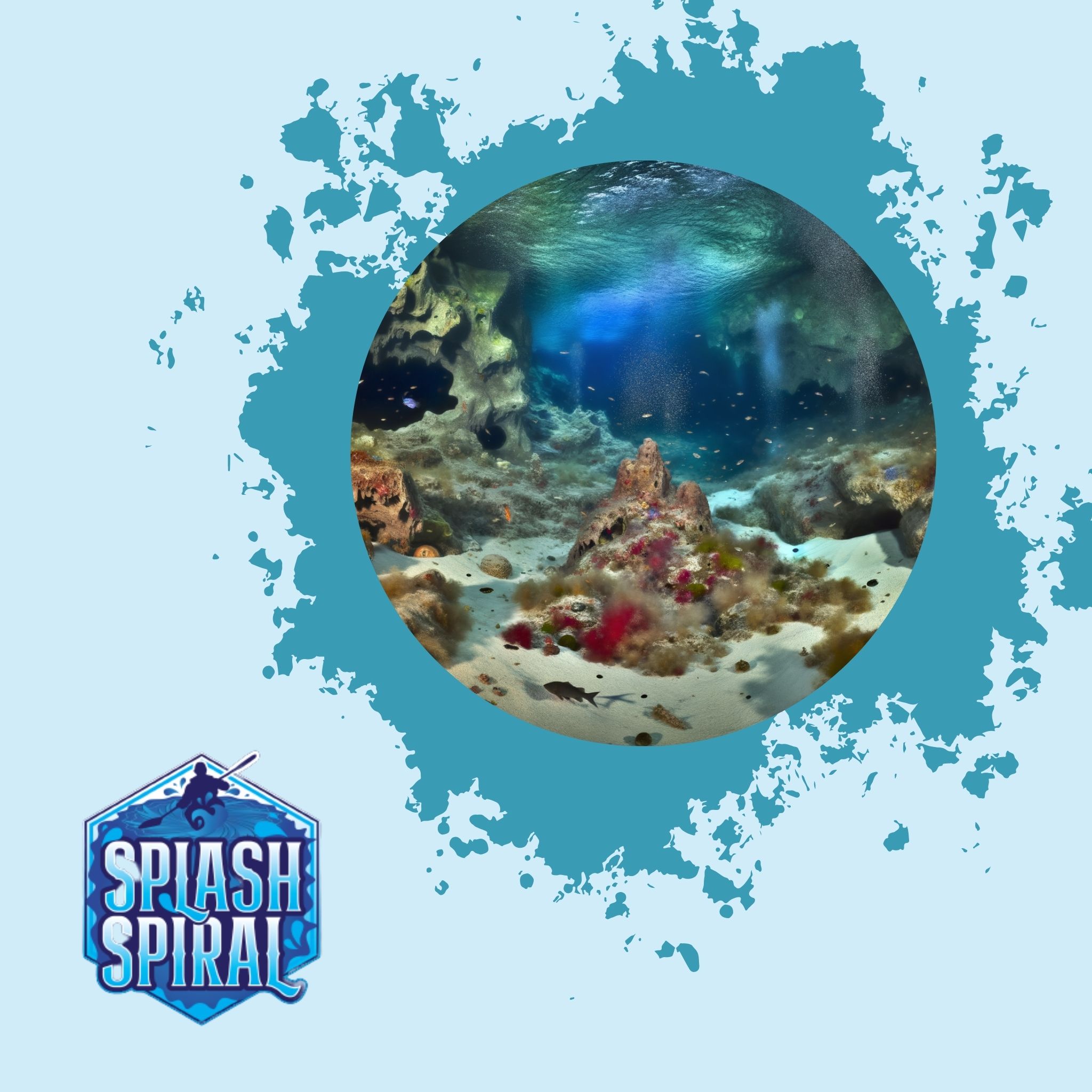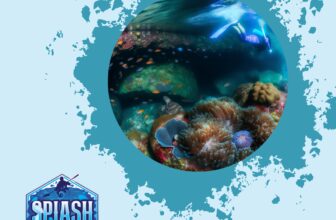
Discovering the beauty beneath the ocean's surface is an unparalleled experience, but it's crucial to understand the delicate balance of these underwater realms. Underwater caves, in particular, represent some of the most fragile ecosystems that exist. This article will delve into the challenges and importance of underwater cave conservation, the fascinating world of cave diving, and the broader implications for underwater ecosystems and diver safety.
Introduction
Underwater caves are mysterious and mesmerizing environments that captivate divers from all walks of life. These natural wonders, hidden beneath the ocean's surface, are not just thrilling for exploration; they are also vital ecosystems teeming with unique life forms. Yet, the enchantment of underwater caves comes hand-in-hand with the responsibility of preserving these delicate habitats. This article dives into the crucial topic of underwater cave conservation, exploring the intricate worlds within these submerged labyrinths, and addressing the broader implications for marine life and diver safety. Whether you're a seasoned diver or just dipping your toes into the world of underwater adventure, understanding the need for mindful diving in these fragile ecosystems is essential.
The Significance of Underwater Cave Conservation
Underwater cave ecosystems are vital for several reasons. First and foremost, they serve as unique habitats for flora and fauna that often can't be found anywhere else. These ecosystems have evolved in isolation, leading to the development of specialized species with fascinating adaptations. From unusual types of fish that have evolved to cope without sunlight, to distinctive invertebrates that make their homes in the nooks and crannies of submerged rock formations, the biodiversity within these caves is nothing short of remarkable.
In addition to their ecological importance, underwater caves are invaluable to scientific research. They provide a living laboratory for studying evolutionary processes, water chemistry, and geological formations. Scientists often explore these environments to gain insights into biodiversity, climate change, and the Earth's geological history. The data collected can inform broader conservation strategies and offer clues about how to protect other delicate ecosystems.
Moreover, these caves play a significant role in maintaining the overall health of marine environments. They act as nurseries for various marine species, contributing to the biodiversity of broader oceanic ecosystems. Without these specialized habitats, many species would face increased competition and diminished survival rates, which could cascade through the food chain and affect larger marine populations.
In summary, conserving underwater caves isn't just about protecting a unique environment; it's about preserving a vital part of Earth's biodiversity, supporting scientific discovery, and maintaining the health of our oceans. Understanding their significance is the first step toward appreciating and ultimately protecting these fragile underwater wonders.
Ecosystem Fragility of Underwater Caves
Underwater caves are like nature's time capsules, preserving unique ecosystems that have evolved in isolation over millennia. These submerged labyrinths are marvels of biodiversity, harboring species that often don't exist anywhere else on the planet. However, this uniqueness also makes them incredibly fragile, sensitive to even the slightest disturbances.
Common threats to these delicate environments are manifold. Pollution, for instance, can wreak havoc on water quality, introducing contaminants that disrupt the balance of life within these caves. Runoff containing chemicals, plastics, and other pollutants can infiltrate cave systems, severely impacting the flora and fauna that depend on pure, clean water.
Human activity poses another significant threat. Unregulated tourism and irresponsible diving practices can cause lasting damage. Even a simple touch can dislodge delicate formations or harm the cave's inhabitants. Physical disturbances can also kick up sediments, choking out organisms that rely on clear water to filter feed or photosynthesize. Furthermore, anchoring and improper waste disposal from boats can cause direct physical and chemical damage to these ecosystems.
To illustrate the fragility of these environments, consider the tragic example of the Dos Ojos cave system in Mexico. Once a pristine underwater wonder, increased tourist activity has led to observable damage. Sections of the cave that were once crystal clear have become clouded with silt, and delicate mineral formations have been broken off or eroded. Another case is Florida's Wakulla Springs, where increased nutrient runoff has led to algal blooms, disrupting the natural balance of the cave's ecosystem.
In summary, underwater caves are breathtakingly beautiful but extremely susceptible to harm. Divers and ocean enthusiasts must treat these spaces with the utmost care, ensuring their preservation for future generations. Understanding the fragility of underwater caves is fundamental to fostering the respect and care needed to protect these incredible natural wonders.
Cave Diving: Navigating the Underwater Labyrinth
For those seeking to explore the hidden depths beneath the water's surface, cave diving offers an intriguing blend of adventure and challenge. Unlike open-water diving, cave diving demands a unique skill set and a heightened level of preparation. It's not just about diving deeper but navigating through complex, often narrow, underwater passageways where direct access to the surface is not always possible.
The Allure of Cave Diving
The allure of cave diving lies in its ability to unveil a world few have seen:
- Submerged Stalactites and Stalagmites
- Rare Marine Species
- Otherworldly Rock Formations
However, this thrill comes with significant risks, requiring divers to be well-trained and equipped.
Getting Started with Cave Diving
To begin your journey into cave diving, you must first be an experienced open-water diver:
- Advanced Certifications: Essential due to the complexity and risks involved
- Logged Diving Hours: Ample experience is crucial for safe cave diving
Specialized Training
Enrolling in specialized cave diving courses is a must. These programs cover critical skills such as:
- Navigating in Total Darkness
- Meticulously Managing Air Supply
- Handling Emergency Situations
Diver Safety: Paramount Importance
Diver safety remains paramount when navigating these perilous paths. Key safety rules include:
- Using a Continuous Guideline: To mark your route
- Planning Your Dive and Diving Your Plan: Stick to your pre-planned route and time
- Never Exceeding Your Training Limits: Stay within your skill level
Safety goes beyond personal preparedness; it involves:
- Understanding and Respecting the Fragile Ecosystems: Every touch or fin kick can disrupt centuries-old formations and delicate aquatic life, underscoring the need for environmental awareness as part of diver training.
The Essence of Cave Diving
In essence, cave diving is a dance of precision, patience, and respect for the underwater world. As you delve into these submerged labyrinths, armed with proper training and a respect for nature, you'll uncover:
- A Realm of Hidden Beauty
- Ecological Importance
Staying informed and cautious will not only protect you but also help preserve these incredible ecosystems for future generations of divers.
Conservation Challenges in Underwater Caves
Conserving underwater caves isn't just about keeping these enchanting spaces pristine; it's an uphill battle against a slew of challenges.
Lack of Awareness
A significant barrier to effective conservation is the lack of general awareness:
- Many people, even within the diving community, are unaware of how delicate and critical these ecosystems are.
- Unlike coral reefs or sandy beaches, underwater caves aren't in plain sight, making it easier to overlook their importance and precarious state.
Accessibility Issues
Access is another major issue:
- Many underwater caves are located in remote or inhospitable regions.
- Difficult for scientists and conservationists to study and monitor these caves adequately.
- Limited access often results in sparse data on these ecosystems, leaving many gray areas on the best conservation methods.
Unregulated Tourism
Unregulated tourism is another thorny issue:
- The popularity of cave diving has led to an influx of untrained or poorly trained divers.
- Their presence can cause physical damage to cave formations and disturb the unique flora and fauna.
- Improperly handled gear or waste can introduce pollutants, adding more stress to these ecosystems.
Climate Change
Climate change also rears its ugly head:
- Rising sea temperatures and changing oceanic conditions can alter the delicate balance of these ecosystems.
- Minor changes in water chemistry or temperature can have devastating effects.
- Increased carbon dioxide levels can lead to ocean acidification, which can erode limestone formations that many underwater caves are composed of.
Multifaceted Approach Required
All these factors combine to create a scenario where the conservation of underwater caves faces considerable obstacles. Addressing these challenges requires:
- Increased awareness,
- Stringent regulations, &
- Coordinated international efforts.
These ecosystems may be hidden, but their importance cannot be ignored.
Strategies for Habitat Protection in Underwater Caves
While the allure of underwater caves continues to draw adventurers from around the world, it's imperative that both experienced and novice divers take strides to protect these fragile ecosystems. Here are some current conservation efforts, best practices for minimizing impact, and insights into the role of marine biotechnology in conserving underwater caves.
Current Conservation Efforts and Organizations
Several organizations are committed to preserving underwater caves and their unique ecosystems. Groups such as the Global Underwater Explorers (GUE) and the International Underwater Cave Rescue and Recovery (IUCRR) work to promote safe diving practices and conservation education.
Key initiatives include:
- Mapping unexplored caves: Detailed mapping helps in understanding and protecting cave structures.
- Monitoring ecosystem health: Ongoing observations track the well-being of flora and fauna.
- Engaging in cleanup and restoration projects: Active efforts to remove waste and restore natural states.
- Awareness campaigns and citizen science programs: Educating the public and involving them in conservation activities.
Best Practices for Divers to Minimize Impact
Being a responsible diver means understanding and implementing certain best practices to protect underwater caves:
- Proper Waste Disposal: Ensure all waste, including non-biodegradable materials, is disposed of correctly. Divers should carry a mesh bag to collect any trash they encounter and dispose of it once back onshore.
- Avoiding Touching or Disturbing Marine Life: Divers should refrain from touching or moving any organisms they encounter. Keeping hands and equipment away from cave walls and the seabed helps preserve delicate structures and inhabitants.
Marine Biotechnology and Conservation
Marine biotechnology offers advanced tools and methods for conserving underwater environments. Here are some innovative techniques:
- DNA Barcoding and Environmental DNA (eDNA) Analysis: These methods allow scientists to monitor biodiversity without disturbing the habitat. Small environmental samples can identify species presence and health indicators.
- Bioengineered Solutions: These include biodegradable materials for dive equipment and innovative waste management strategies derived from marine organisms, which reduce the ecological footprint of diving activities.
Conclusion
By adopting these strategies and remaining mindful of their environmental impact, divers can play a pivotal role in safeguarding the beauty and integrity of underwater caves for future generations.
For more in-depth information on marine biotechnology and its potential, check out marine biotechnology.
The Role of Divers in Conservation
As a diver, you have a unique opportunity to aid in the protection and preservation of underwater caves. Becoming a conservation advocate isn't just about what you avoid doing but also about the proactive steps you take to protect these delicate ecosystems.
Educate Yourself
First and foremost, educate yourself. Learning about the fragility of underwater caves can transform how you approach your dives. Knowledge empowers you to:
- Dive responsibly.
- Share insights with others.
The more you understand about underwater environments, the better you can advocate for their protection.
Practice Buoyancy Control
One practical tip is to always practice buoyancy control. Poor buoyancy can cause accidental contact with sensitive cave formations, disturbing habitats and harming marine life. Make sure you’re comfortable and skilled in maintaining neutral buoyancy before attempting cave dives.
Leave No Trace
Adhere to the principle of "leave no trace." This involves:
- Taking all your waste with you.
- Avoiding touching marine life.
- Not collecting souvenirs.
Even small actions, like not stirring up sediment, can significantly impact the health of these ecosystems.
Participate in Clean-Up Dives
Additionally, consider participating in clean-up dives. Many organizations coordinate efforts to remove debris from underwater environments. Your participation in these dives can make a tangible difference in maintaining the pristine condition of caves.
Promote Sustainable Diving Practices
Promote sustainable diving practices among your peers. Simple acts such as:
- Sharing articles, like sustainable diving practices.
- Discussing your experiences.
Raising awareness about conservation can encourage others to adopt environmentally friendly habits and respect the natural beauty of the underwater world.
Support Conservation Organizations
Lastly, support conservation organizations. Whether through:
- Donations.
- Volunteer work.
- Advocacy.
Your involvement can boost the efforts aimed at protecting underwater caves.
Conclusion
By implementing these practices and encouraging fellow divers to do the same, you play a crucial role in ensuring that underwater caves remain vibrant ecosystems for future generations to explore.
Future Directions in Underwater Cave Conservation
The path forward for underwater cave conservation hinges on innovative technologies, robust policies, and community engagement.
Emerging Technologies
Advancements in technology are offering promising avenues for protecting these fragile ecosystems. AI-driven underwater drones and high-resolution imaging provide unprecedented insights into the complex structures of underwater caves. This data aids scientists in monitoring environmental changes with pinpoint accuracy. Additionally, 3D mapping tools enable the creation of detailed cave maps, which are crucial for both conservation planning and ensuring diver safety.
Policies and Regulations
On the policy front, there is a growing recognition of the need for comprehensive regulations to safeguard underwater caves. Implementing stricter guidelines for cave diving, coupled with rigorous enforcement, can significantly reduce human-induced damage. International collaboration is also crucial; shared policies can help establish protected marine areas that transcend national boundaries, ensuring a coordinated approach to conservation.
Success Stories and Innovative Projects
There are already notable successes demonstrating what can be achieved with dedicated conservation efforts. For example, community-driven initiatives in Mexico's cenotes have resulted in cleaner, safer ecosystems through concerted cleanup efforts and educational outreach. Moreover, innovative projects like the Global Underwater Explorers' Project Baseline are empowering divers to contribute to scientific data collection, fostering a culture of active participation in conservation.
By leveraging technology, advocating for strong policies, and drawing inspiration from successful projects, we can carve a sustainable future for underwater caves. Each step forward brings us closer to ensuring these underwater marvels endure for generations to come.
Conclusion
Underwater caves are not just beautiful, mysterious places; they are vital ecosystems teeming with unique life forms and invaluable scientific data. Conserving these fragile environments is not just a task for scientists and policymakers but for every diver and ocean enthusiast. By understanding the importance of these underwater realms and the threats they face, we can take meaningful steps toward their preservation.
Every dive into an underwater cave is an opportunity to witness the delicacy and grandeur of nature. Your actions, whether through minimizing your impact as a diver or spreading awareness, can make a significant difference. Remember, each individual's effort contributes to the broader mission of conserving these ecosystems.
Underwater caves remind us of the interconnectedness of our natural world. By protecting these precious habitats, we help preserve the marine biodiversity that sustains life beneath the waves and, ultimately, life on Earth. So, gear up, dive responsibly, and become a steward of the underwater world. Your passion and commitment are key to ensuring these hidden treasures endure for generations to come.







